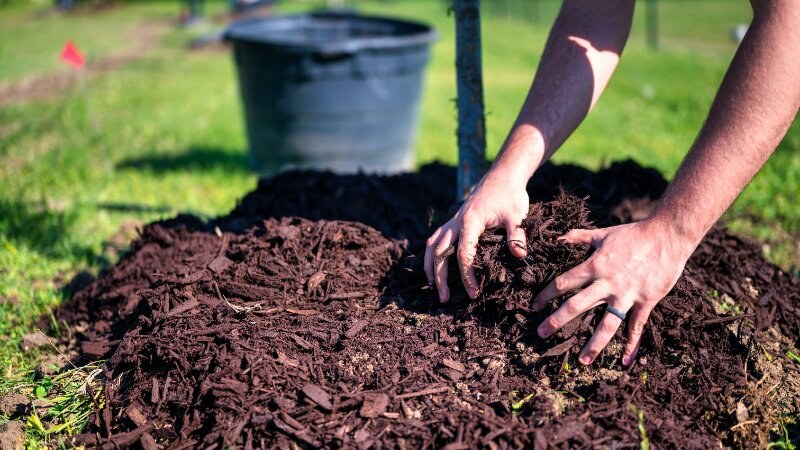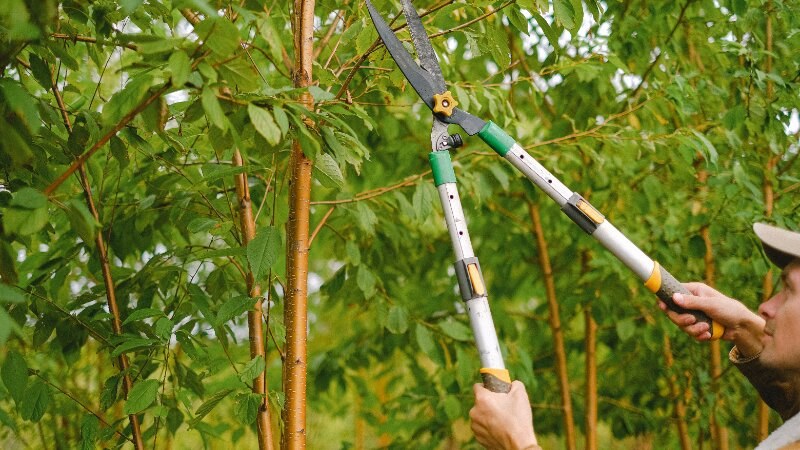DIY Tree Winterization vs. Professional Tree Care Services
Reading time: 7 minutesGranted, in 2023, we’ve experienced a warmer December than usual, but as we near the end of the month and head into January, it’s time to ditch your light jackets for those parkas and toques.
When it comes to protecting your trees during winter, you generally have two options: the hands-on approach of DIY tree winterization or the expertise of professional tree care services.
Each avenue offers distinct benefits tailored to different needs and preferences. DIY tree winterization involves personal care and attention, while professional services ensure expertise and comprehensive care. Both methods aim to protect trees from the harsh Western Canada winter conditions, but the choice ultimately depends on your resources, time, and the level of care your trees require.

Factors to Consider Before You Decide
Trees require proper care and protection to withstand severe weather and flourish in the spring. However, should you hire a pro or do it yourself? Before you decide, consider a few things:
Cost and Convenience
Opting for DIY tree winterization might seem like a money and time saver, but the process is a learning curve. And frequently, it could be an expensive one.
You'll need to invest in or rent the right tools and spend some time doing your research. You may also risk damaging your trees or wasting money if you make mistakes. Although it can be expensive to hire a professional, doing so can mean high-quality work and guaranteed results.
Skill and Experience
Proficiency in tree care and experience are prerequisites for DIY tree winterization. For example, in the case of tree trimming, if you cut too much or the top of the tree and ultimately make a bad cut that rips into the bark, you could cause permanent, irreversible damage to the tree.
Winterizing some trees is easier than others, while others may require additional knowledge and care.
In tree trimming, for instance, it's important to choose the right location for pruning. Incorrect cuts can lead to disease and pest infestations. Additionally, the timing of pruning impacts a tree's ability to bloom and bear fruit. Mistakes in these areas can lead to lasting, irreversible harm to your trees.
Winterization requirements can vary significantly among different tree species. Some may be straightforward to prepare for winter, while others demand more specialized knowledge and care.
At Green Drop Trees, our ISA-certified arborists possess the knowledge and experience to assess your trees' specific needs accurately. Their skillset extends beyond winterization to overall tree health, disease prevention, and proper maintenance.
Safety and Liability
Trying to winterize trees by yourself can get risky, especially when dealing with big, tall, or damaged ones. It's not just about the danger; there's also the question of liability.
Professionals have the skills and gear to handle it safely and save you from any unexpected tree or property-related damage. There could be a chance of personal injury to both your neighbours and your property. You could be liable for injuries or damages if you lack insurance or a license.
Opting for professional tree care not only shields you from liability but also prioritizes safety. Professionals come equipped with the necessary tools, insurance coverage, and licenses, ensuring a secure and expert handling of the winterization process.

Tree Winterization Tips
When it comes to winterizing your trees, being the arboreal caretaker can be rewarding, but it's crucial to dance with caution and avoid missteps. Here's your backstage pass to a tree winterization extravaganza:
1. Prune with Precision
Channel your inner tree stylist by pruning dead, diseased, and overlapping branches in winter or any time of the year. It's like giving your tree a makeover! But remember, moderation is key—don't stress it out by over-pruning. Aim for a trim that's no more than 10% of the tree's canopy.
2. Mulch Magic for the Newbies
Show some love to the younger members of your arboreal family. Mulch your trees, especially those newly planted or transplanted trees, to keep their roots cozy and weed-free. Think of it as tucking them in with a warm blanket.
But don't suffocate them—spread a 2- to 4-inch layer of organic mulch like wood chips, leaves, or straw, leaving a little breathing room around the trunk. Avoid piling it up too high; we're going for insulation, not a mulch volcano!
3. Feed and Hydrate – but Not Too Much
It's time for a tree feast! Fertilize and water before the ground freezes to give your tree the nutrients it craves. And just like us, they need a sip of water to stay hydrated. But be mindful—don't go overboard! Use a slow-release, specially formulated tree fertilizer tailored to your tree's taste and water deeply, but not too often.
Think of it as a spa day—treat them well, but don't drown them!
4. Dormant Spray Elegance
Apply a dormant spray, a secret elixir against pests and diseases. It's like a winter coat for your tree! Make it a late fall or early winter affair by coating the bark and buds with the magic potion. Follow the instructions on the label. But avoid spray days with wind, rain, or frost—Mother Nature won't appreciate it, and neither will your tree.
With these tips, you'll be the star of the winter tree care show, ensuring your leafy friends dazzle and thrive through the chilly season!
Benefits of Hiring a Professional Tree Care Services
If you prefer to hire a professional tree care service to winterize your trees, here are some benefits:
- Saving time and effort. You don’t have to worry about buying or renting tools, researching, or risking injuries. You can sit back and relax while the professionals do the work for you.
- Getting expert advice and quality work. Experts come prepared with the know-how, hands-on experience, and all the right gear to tackle any tree care challenge, whether it's pruning or dealing with pesky pests. Plus, they're like your tree's personal advisors, sharing tips and recommendations to keep your leafy friends happy and healthy in the long run.
- Ensuring safety and liability. Professionals have the proper insurance, license, and certification to do tree work safely and legally. They can also protect your property and your neighbour’s property from any damages or injuries that might occur during the process.
- Sustainable solutions. DIY winterization can come with a cost to the environment, especially if you use harmful insect-repellent oils and sprays. They may keep insects and other pests at bay, but are they safe for your trees, pets and the environment? A professional tree service that prioritizes safe, eco-friendly products and is committed to sustainable and environmentally responsible practices is the way to go.

Frequently Asked Questions
Can I effectively winterize my trees on my own?
While it's possible to perform DIY tree winterization, the effectiveness depends on various factors like the tree's size, health, species, and your expertise. Professional tree care services and certified arborists bring experience and specialized equipment, ensuring thorough winterization.
What risks are associated with DIY tree winterization?
DIY winterization comes with potential risks, especially for large or damaged trees. There's a risk of personal injury and property damage. Professionals are equipped with the necessary tools and have insurance, mitigating these risks.
How much should I prune during winterization?
Pruning is essential, but overdoing it can stress the tree. Aim to remove no more than 10% of the tree's canopy. Consulting with a professional can provide personalized guidance based on your tree's specific needs.
Is mulching necessary for tree winterization?
Mulching is beneficial for insulating roots, retaining moisture, preventing weed growth and improving soil nutrients and structure. However, improper mulching can lead to issues.
What's the advantage of hiring professional tree care services for winterization?
Professionals bring expertise, proper equipment, and insurance to the table. They ensure effective winterization, reducing the risk of damage, promoting tree health, and providing a hassle-free experience.
Can I use any fertilizer for winter tree care?
Using a slow-release, organic tree fertilizer suitable for your tree's type and soil condition is crucial. Fertilization is ideal in spring or winter when the temperature is not extreme.
How often should I water my trees during winter?
While trees do need water in winter, watering in winter is generally not required. Deep watering for your trees, especially spruce, in late Fall, can help your trees prevent winter burns. Checking soil moisture and consulting with professionals can help determine the right watering schedule.
When is the best time to apply dormant spray for tree protection?
Dormant spray is typically applied in late fall or early winter when the tree is dormant. Professionals can guide you on the appropriate timing and application techniques to safeguard your trees from pests and diseases.
Green Drop: Your Tree Health Care Partner!
We’re more than just the tree experts! We also care about your trees’ health and well-being! Winter is here, after all! Here’s what you get with our tree health care services:
- Free yard consultation and examination by our ISA-certified arborists
- Root Boost fertilization to nourish and protect your trees’ roots
- Pest Identification and Disease Diagnosis to prevent and treat any issues affecting your trees
- Personalized treatment plans from our certified arborists to suit your trees’ needs and preferences
- Season-long monitoring and maintenance to ensure your trees’ health and happiness
Ready to get started? Book your tree health care service now! Happy winter!

